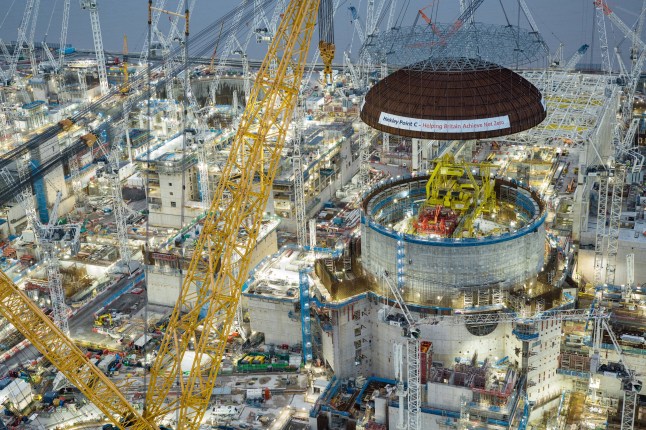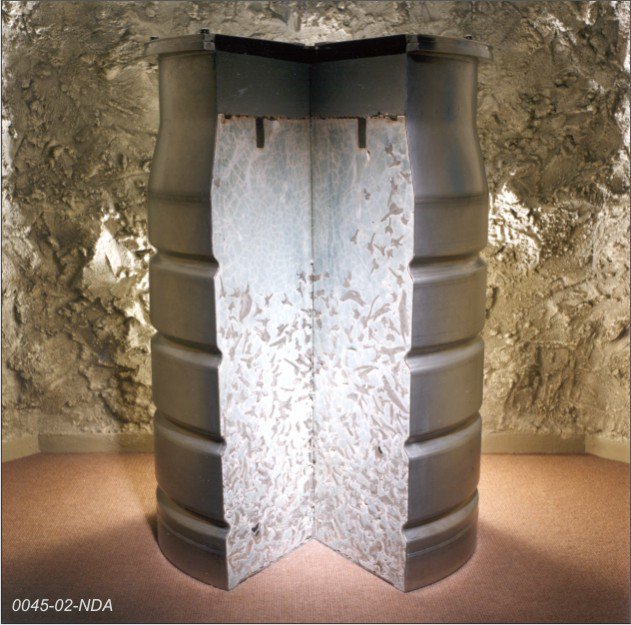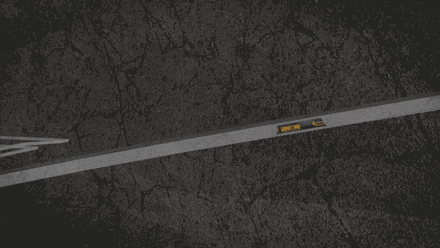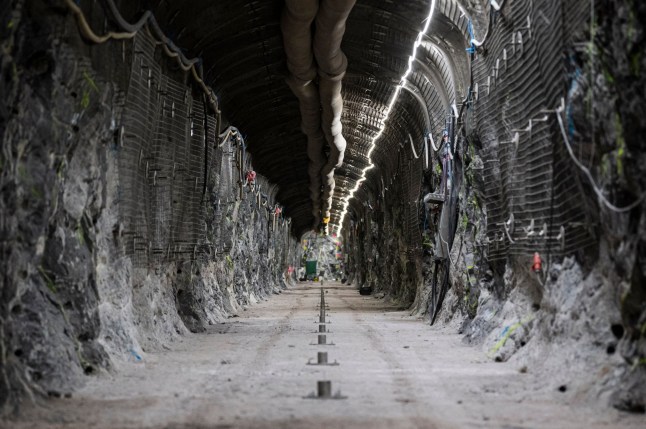
New British nuclear power facilities like Hinkley Point C,above,and Sizewell C will require space to store waste (Picture: EDF Energy/AFP)
Here’s a puzzle for you. Imagine you have enough ‘stuff’ to fill St Paul’s Cathedral to the brim five times over. This stuff is toxic to life on Earth. And it’s going to stay toxic for centuries.
Where are you going to put it?
It’s a question that has vexed experts ever since the world was yanked into the atomic age by US physicist J Robert Oppenheimer around 80 years ago. At first,it was military nuclear tests,and then it was civil nuclear power: all of it produces radioactive waste,and that needs to go… somewhere.
Amid the British government’s enthusiastic backing of nuclear power and investment in the new Sizewell C power plant on the Suffolk coast,figuring out the destination for this lethal product is as important as ever.
‘Things that were ruled out along the way were the classic,why can’t we fire it up into space?’ said Neil Hyatt,Chief Scientific Adviser to the UK’s Nuclear Waste Services (NWS).
What does nuclear waste actually look like?
Sadly,it’s not the glowing green sludge that you’ve seen Homer Simpson spill from metal barrels at Springfield Power Plant.

An example of how intermediate-level waste is stored (Picture: Nuclear Waste Services)
High-level waste,which results from the reprocessing of spent fuel,is radioactive liquid which is converted into a solid block of glass.
Intermediate-level waste consists of the leftovers from old and operating nuclear facilities,including fuel cladding,rubble,and – yes – some sludge. It’s usually immobilised in cement and packed into stainless steel containers.
In 1982,a specialist body called Nirex was set up with a remit to find a place to build an underground store in the UK,but every initiative crumbled in the face of protests. Some didn’t even get as far as drilling to investigate the local rock.
Seventeen years later,in 1999,a report from the House of Lords said any efforts to create a facility for ‘deep geological disposal’ would need to involve communities from the start.
Selecting a site is complicated – like everything else in this story – by the extreme timescales involved. The waste will stay toxic for so long,scientists must take into account how the ground itself is going to shift over the next 100,000 years.
Yes,that’s 100 millennia from now. For context,it’s been about 100,000 years since Homo Sapiens first left Africa.

There is space for the nuclear waste that has been produced so far and will be produced by nuclear power stations not yet built
‘We’re looking for rocks that have been stable for millions of years or hundreds of millions of years,’ said Professor Hyatt.
‘The reason for that is the radioactive waste hazard decays quite quickly over the first sort of 300 years,and then you’re left with this tail that decays a bit more slowly.
‘After the order of 100,000 years or so,the radioactivity has decayed to a level approximately equal to the original uranium ore.’
There are currently three sites in contention to house the UK’s geological disposal facility (GDF): Mid-Copeland and South Copeland in Cumbria,and Theddlethorpe in Lincolnshire. All are free to withdraw from the process whenever they like.
That approach is influenced by Onkalo in Finland,a similar project which is decades ahead of the British effort.

The Repository in Onkalo,Finland’s answer to the question of storing waste (Picture: Jonathan Nackstrand/AFP)
Pasi Tuohimaa,a spokesperson for site operators Posiva,said: ‘None of the projects in the world fail because of not knowing the technology. Instead,they fail because of the political situation or bad communications.’
But aside from investment in community projects,the main incentive for the selected sites to stick with the proposal is the sheer scale of it.
The storage vaults for the UK’s 750,000m3 of waste will be constructed in tunnels covering an area of around 36km2 at a depth of between 200 and 1,000 metres. If all goes to plan,the process of depositing will begin in the 2050s and end about 175 years later.
Like a medieval cathedral,generations of people will work on the project,knowing they will never live to see the moment it is backfilled and the contents are (fingers crossed) never seen again.
It’s almost certainly the biggest infrastructure project in the UK that most people have never heard of. As Professor Hyatt says,it’s a ‘long,long,long mission life.’
The Finnish nuclear waste at Onkalo will be stored in rock that has barely moved in close to a billion years,which – according to Mr Tuohimaa – demonstrates how safe it is.
‘The nuclear industry is the only industry in the world that knows where its waste is after the next ice age,’ he said.
‘When there’s no London left,and there’s two kilometres of ice on top of northern Europe,there’s no Stockholm,there’s no Copenhagen,everything is demolished – but we know where our waste is.’
This story was first published on September 1 2024.
United News - unews.co.za